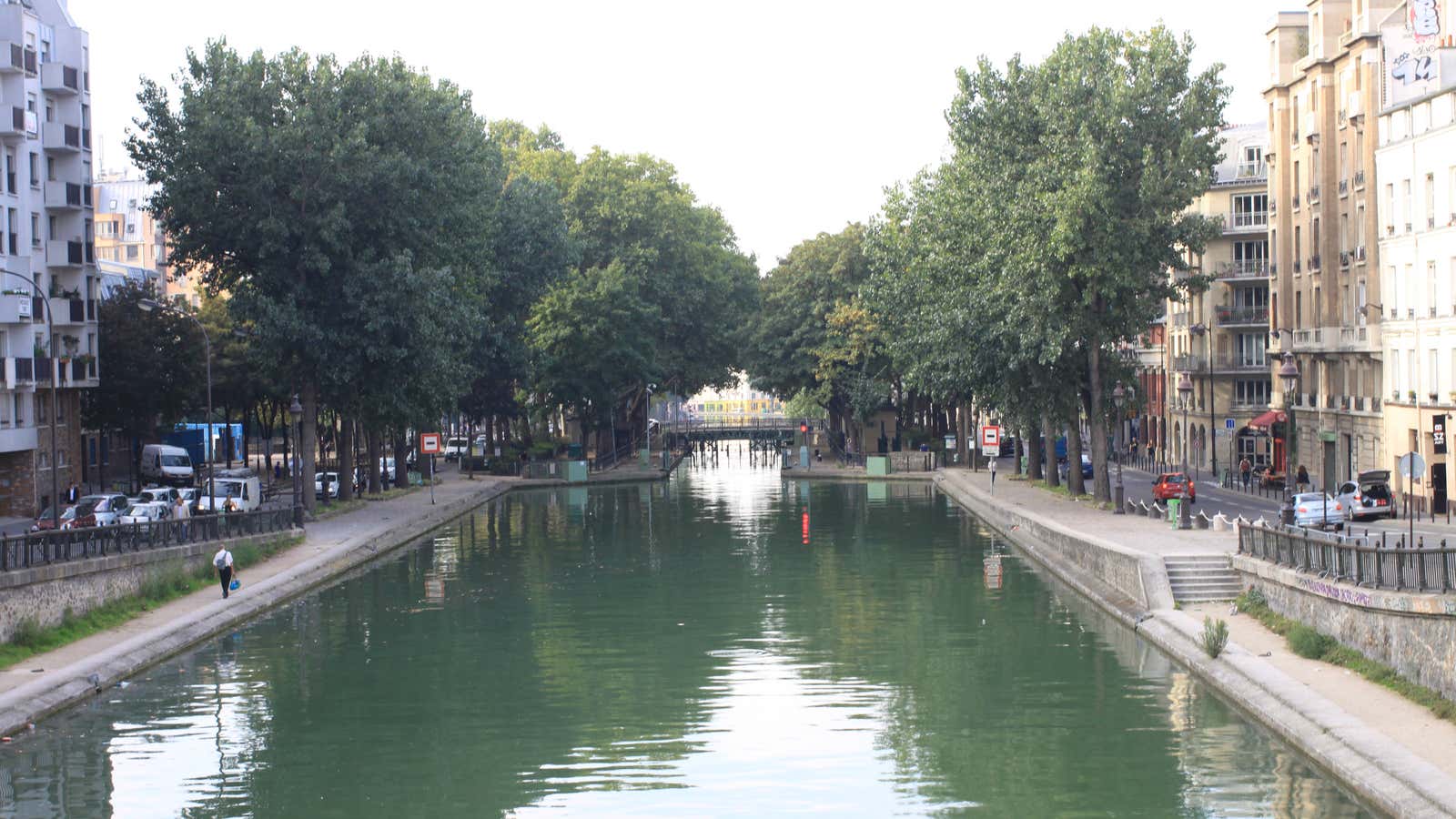Paris
I’ve walked down Paris’ Canal Saint-Martin countless times: going shopping, visiting friends, running to a doctor’s appointment. Ordinary activities in what is simply my neighborhood. But this time is different. As the sun sets less than 24 hours after the terrorist attacks that shook the city, I hear church bells as I walk along. They’ve always rung at this hour, but the noise of the city covered them somehow. Today, though, a strange calm reigns.
In less than 10 minutes, I’ve made my way from my apartment to the rue Bichat. But I’m not going to visit my friends there. (I lived on this street just a few years ago and loved the neighborhood so much I insisted on finding another place within a four block radius.) Today, I’m a reporter on assignment, heading to a crime scene. A crime scene in my neighborhood.
As I walk along the street, the silence, the emptiness continue. And then a flash of joy, a hint of normalcy. A group of children shriek with delight as they play badminton in the middle of the road where cars usually pass. No cars allowed now, of course. As their laughter disappears in the wake of my footsteps, I arrive on the scene. About 100 people gathered in front of Le Carillon, a bistro where one of the attacks occurred.
Flashback to before the attack. Here is what life in the neighborhood is generally like: Every neighbor has his or her favorite café where he or she goes for a quick morning coffee before work. For some, it’s Le Carillon. For others it’s the café a block closer to the Canal. I lived in the building next door but never knew the café’s name. It was just “the café downstairs,” and my dearest friends in the building would go there daily. Oh, and there’s more to this neighborhood than just hanging out in cafés. There’s also the small market on Sundays, where we would run into so many friends and neighbors that a half hour trip turned into an hour. I made friends with a designer who owns a small shop around the corner, and when I go in (to this day), I always sit down for a drink and a chat before looking at the clothing. Young people and families stroll the streets day and night, laughter mingling with cigarette smoke in the air.
This was a real Parisian neighborhood. No, this is a real Parisian neighborhood. It is not the Paris of guidebooks and tourism (although some tourists have discovered its charm).
Post attack, we are all asking ourselves why. Why here? The locals I interviewed almost all repeated the question over and over. And then the next question: What now? What has happened to our neighborhood, and can it recover?
I looked around at the faces turned upward to the sky and those reflected in the darkened windows of the Carillon. And I tentatively approached the saddest ones. Most people were willing to speak, and most were devastated. But they all had one thing in common: the determination to keep living the Parisian life to the fullest. To continue to go downstairs for their daily coffee and to meet friends after work at a favorite bar. (With more caution, and less of a carefree spirit unfortunately.)
I thought back to the lyrics of the old Cheers song, “Sometimes you want to go where everybody knows your name.” And this is the Paris that we—those of us in this neighborhood—appreciate most. Those places where everyone knows our name. And even facing the threat of terror, we will not abandon them.




